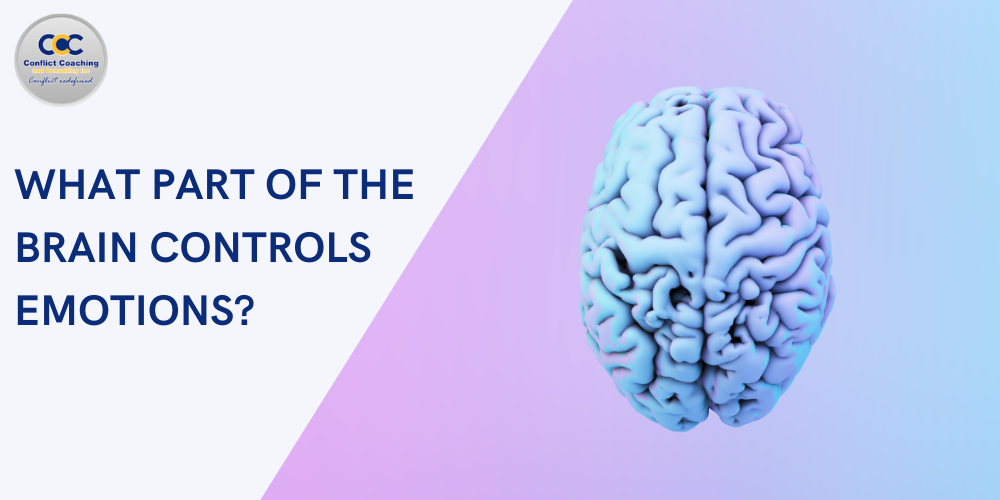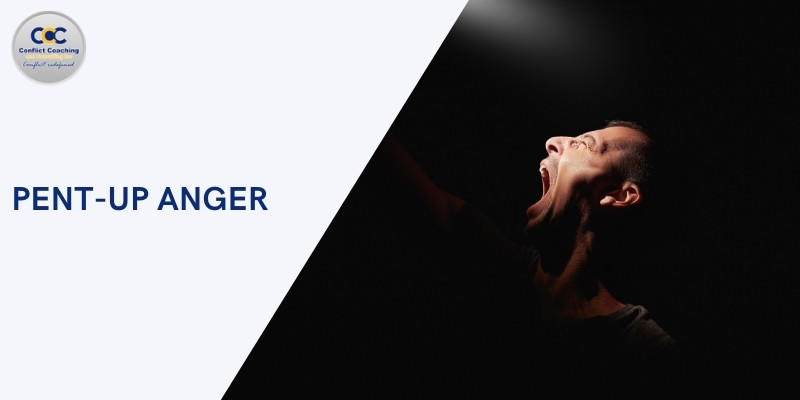
What Part of the Brain Controls Emotions?
When we talk about emotions, those powerful feelings that make us laugh, cry, or feel scared – it’s fascinating to know that they all start in our brains.
Our brain is a complex organ, and understanding what part of the brain controls emotions can help us better understand ourselves. At the heart of this emotional control is a group of structures known as the limbic system.
The limbic system is like the brain’s emotional hub. It includes several essential parts, such as the amygdala, hippocampus, and hypothalamus.
Each of these parts plays a unique role in managing our feelings. For example, the amygdala is key in processing fear and pleasure, helping us respond to danger or enjoy happy moments.
Together, these parts of the limbic system work like a team to produce and regulate our emotions. They ensure we react appropriately to different situations, whether feeling joy when seeing a friend or fear when facing a threat.
Understanding the limbic system gives us valuable insights into how our brain shapes our emotional experiences.
Where Do Emotions Come From? The Limbic System
Emotions are powerful and complex experiences arising from specific brain areas working together.
The limbic system is the central part of the brain responsible for our emotions. This system acts like an emotional command center, managing how we feel and react to different situations.
The limbic system includes several key components, each crucial in processing and regulating emotions.
These components are the amygdala, hippocampus, hypothalamus, and limbic cortex. Let’s examine each of these parts more closely to understand their unique functions.
Hypothalamus
The hypothalamus is a small but mighty part of the limbic system. It plays a vital role in regulating many of the body’s essential functions, including temperature, hunger, and thirst.
Regarding emotions, the hypothalamus is crucial for managing the physical reactions accompanying our feelings. It helps control the release of hormones affecting our mood and behavior.
For example, when you’re scared, the hypothalamus signals the release of adrenaline, preparing your body for a “fight or flight” response. This makes the hypothalamus significant in connecting our physical state with our emotional experiences.
Hippocampus
The hippocampus is best known for its role in forming and organizing memories. It is essential for converting short-term memories into long-term ones.
But what does this have to do with emotions? Our memories are often tied to our feelings.
Think about a happy memory from your childhood or a sad event you experienced; these memories come with emotions attached to them.
The hippocampus helps link these emotions with our experiences, allowing us to remember how we felt during specific events. This connection between memory and emotion helps shape our overall emotional landscape.
Amygdala
The amygdala is a small, almond-shaped structure that plays a significant role in how we experience and respond to emotions, especially fear and pleasure.
It acts as the brain’s alarm system, detecting potential threats and triggering the appropriate emotional and physical responses.
For example, if you see a snake, the amygdala quickly processes this information. It generates a fear response, making you either freeze or run away.
The amygdala also helps us recognize and react to other people’s emotions, making it crucial for social interactions and understanding.
Limbic Cortex
The limbic cortex, also known as the cingulate cortex, is involved in processing emotional responses and regulating mood. It helps integrate the emotional information from other parts of the limbic system with our thoughts and actions.
The limbic cortex is essential for making decisions based on emotional input and managing how we respond to complex emotional situations.
It allows us to experience a wide range of emotions. It helps us adapt our behavior based on our feelings and our context.
By working together, these limbic system components create a complex and finely tuned network that shapes our emotional experiences, influences our behavior, and helps us navigate the world around us.
Understanding how the limbic system functions can give us valuable insights into the nature of our emotions and how we can better manage them.
What Part of the Brain Controls Fear?
Fear is one of the most primal and powerful emotions we experience. It plays a crucial role in our survival, alerting us to danger and preparing our bodies to respond.
The part of the brain most directly involved in controlling fear is the amygdala, a small, almond-shaped structure within the limbic system.
The amygdala is like the brain’s alarm system. When it detects a potential threat, it sends signals that trigger responses designed to protect us. This can include the release of stress hormones like adrenaline, which prepare the body for a “fight or flight” response.
The amygdala processes sensory information rapidly, often before the conscious mind fully recognizes the threat. You might jump at a sudden noise before realizing what caused it.
Other parts of the brain contribute to the fear response, including the amygdala. The hypothalamus helps regulate the physical aspects of fear, such as increased heart rate and heightened alertness.
The prefrontal cortex, which is involved in higher-order thinking and decision-making, helps us assess the threat and decide how to respond.
Together, these brain regions create a coordinated response to fear, ensuring we react quickly and effectively to potential dangers.
Understanding how the brain controls fear can help us better manage anxiety and stress, leading to healthier emotional responses.
What Part of Your Brain Controls Anger?
Anger is a powerful emotion ranging from mild irritation to intense rage. It’s a natural response to perceived threats, frustration, or injustice. Understanding what part of the brain controls anger can help us manage this emotion more effectively.
Several key areas within the brain regulate anger, with the limbic system playing a central role.
The amygdala is crucial in generating anger. This almond-shaped structure within the limbic system detects threats and triggers emotional responses.
When the amygdala perceives a situation as threatening or frustrating, it can initiate an anger response.
This is part of the body’s automatic “fight or flight” mechanism, preparing us to confront or escape the perceived danger.
The hypothalamus is another crucial player in controlling anger. It helps regulate the physical manifestations of anger, such as increased heart rate, blood pressure, and adrenaline release.
These physical changes prepare the body to react to the source of anger, whether through confrontation or other means.
The hypothalamus bridges emotional and physical responses, ensuring the body is ready to respond to the feelings generated by the amygdala.
The prefrontal cortex, located at the front of the brain, plays a significant role in managing and regulating anger. This area involves higher-order cognitive functions, such as decision-making, problem-solving, and impulse control.
When we experience anger, the prefrontal cortex helps us assess the situation, weigh the consequences of our actions, and choose an appropriate response.
It can act as a brake on the more primitive impulses generated by the amygdala, allowing us to respond to anger in a controlled and socially acceptable manner.
The limbic cortex, or cingulate cortex, processes emotions and regulates mood.
It helps integrate emotional information from the amygdala and other parts of the limbic system with our thoughts and actions.
The limbic cortex is essential for experiencing and expressing anger in a way that aligns with our overall goals and values.
It helps us adapt our behavior based on our emotional state and context, allowing us to manage anger constructively.
Together, these brain regions produce and regulate anger, ensuring that it serves its purpose as a protective and motivational force while keeping it in check to prevent harmful or destructive behavior.
Understanding the neural basis of anger can provide insights into how we can better manage this powerful emotion and respond to situations that trigger it in a healthy and productive way.
What Part of Your Brain Controls Happiness?
Happiness is a complex and multifaceted emotion that can be triggered by various factors, from personal achievements to meaningful social connections.
Several key brain areas work together to produce feelings of happiness, with the limbic system playing a significant role.
The nucleus accumbens is a critical component of the brain’s reward circuitry. It is often referred to as the brain’s “pleasure center” because it is heavily involved in processing rewards and producing feelings of pleasure and satisfaction.
When we engage in activities that bring us joy, such as eating our favorite food or spending time with loved ones, the nucleus accumbens releases dopamine. This neurotransmitter creates feelings of happiness and enjoyment.
The prefrontal cortex, particularly the left prefrontal cortex, is associated with positive emotions, including happiness. This brain area is involved in higher-order thinking, decision-making, and planning.
It helps us anticipate and experience joy by setting goals, making plans, and envisioning positive outcomes.
The prefrontal cortex also helps regulate our emotional responses, allowing us to maintain a positive outlook even in challenging situations.
While the amygdala is often associated with fear and anger, it also affects positive emotions like happiness. The amygdala helps process emotional memories and can enhance our happiness when we recall joyful experiences.
It works with other brain parts to create a balanced emotional response, ensuring that positive emotions like happiness are appropriately integrated into our overall emotional experience.
The hippocampus is involved in forming and retrieving memories. It plays a role in happiness by helping us remember positive experiences. These happy memories can boost our mood and contribute to general well-being.
The hippocampus works with the amygdala and prefrontal cortex to link our past joyful experiences with our present emotional state.
What Part of Your Brain Controls Love?
Love is a deeply complex and multifaceted emotion including affection, attachment, and passion. It engages several areas of the brain, particularly those involved in reward, emotion, and social bonding.
The ventral tegmental area (VTA) is a part of the brain’s reward system that plays a key role in the feelings of romantic love.
When we experience romantic love, the VTA releases dopamine, which creates feelings of pleasure, motivation, and reward. This is why being in love can feel exhilarating and intensely pleasurable.
The caudate nucleus is another essential part of the brain’s reward circuitry. It is involved in learning and memory, particularly regarding rewarding stimuli.
When we fall in love, the caudate nucleus helps us remember and focus on our loved ones, reinforcing the bond and making us want to spend more time with them.
Oxytocin and vasopressin are crucial hormones in social bonding and attachment. These hormones are released in the hypothalamus and influence brain areas involved in emotional regulation and social behavior.
Oxytocin is often referred to as the “love hormone” because it promotes feelings of trust, empathy, and bonding, particularly in romantic and parental relationships. Vasopressin is associated with behaviors that support long-term bonding and commitment.
The amygdala is involved in the emotional intensity of love, including both the positive and negative aspects.
It helps process the strong emotions associated with love and attachment. It works with other parts of the brain to manage the complex emotional landscape of relationships.
Prefrontal Cortex
The prefrontal cortex is involved in the higher-order processing of love, such as making decisions about relationships and future planning. It helps us evaluate relationships, make commitments, and maintain long-term connections.
The prefrontal cortex integrates our emotional experiences with our thoughts and actions, allowing us to navigate the complexities of love thoughtfully and purposefully.
These brain regions work together to create the powerful and multifaceted experience of love, influencing our emotions, behaviors, and relationships.
Understanding how the brain controls love can provide insights into the nature of our deepest connections and help us nurture and sustain meaningful relationships.
Conclusion
Understanding what part of the brain controls emotions is fascinating and enlightening. The limbic system, with its key components such as the amygdala, hypothalamus, hippocampus, and limbic cortex, plays a pivotal role in shaping our emotional experiences.
Whether it’s fear, anger, happiness, or love, these emotions arise from a complex interplay of different brain regions working together to help us navigate our world.
We can better understand ourselves and others by gaining insights into how the brain controls these emotions. This knowledge can help us manage our emotional responses more effectively, leading to healthier relationships and a more balanced life.
Emotions are an integral part of the human experience, and understanding their neural basis provides a deeper appreciation of our brain’s intricate and impressive capabilities.
As we continue to explore and learn more about these processes, we can utilize this knowledge to improve our mental and emotional well-being.





Responses